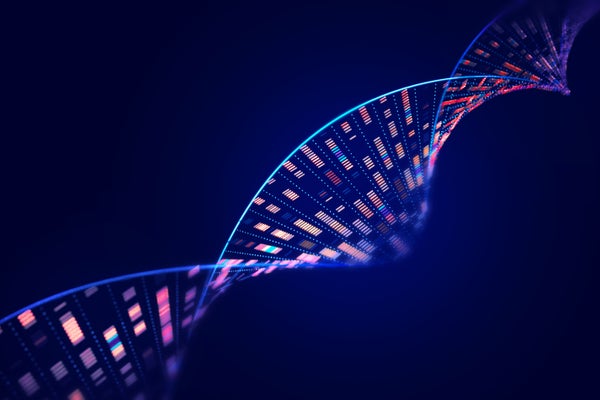Google DeepMind has wielded its revolutionary protein-structure-prediction AI in the hunt for genetic mutations that cause disease.
A new tool based on the AlphaFold network can accurately predict which mutations in proteins are likely to cause health conditions — a challenge that limits the use of genomics in healthcare.
The AI network — called AlphaMissense — is a step forward, say researchers who are developing similar tools, but not necessarily a sea change. It is one of many techniques in development that aim to help researchers, and ultimately physicians, to ‘interpret’ people’s genomes to find the cause of a disease. But tools such as AlphaMissense — which is described in a 19 September paper in Science — will need to undergo thorough testing before they are used in the clinic.
On supporting science journalism
If you're enjoying this article, consider supporting our award-winning journalism by subscribing. By purchasing a subscription you are helping to ensure the future of impactful stories about the discoveries and ideas shaping our world today.
Many of the genetic mutations that directly cause a condition, such as those responsible for cystic fibrosis and sickle-cell disease, tend to change the amino acid sequence of the protein they encode. But researchers have observed only a few million of these single-letter ‘missense mutations’. Of the more than 70 million possible in the human genome, only a sliver have been conclusively linked to disease, and most seem to have no ill effect on health.
So when researchers and doctors find a missense mutation they’ve never seen before, it can be difficult to know what to make of it. To help interpret such ‘variants of unknown significance,’ researchers have developed dozens of different computational tools that can predict whether a variant is likely to cause disease. AlphaMissense incorporates existing approaches to the problem, which are increasingly being addressed with machine learning.
Locating mutations
The network is based on AlphaFold, which predicts a protein structure from an amino-acid sequence. But instead of determining the structural effects of a mutation — an open challenge in biology — AlphaMissense uses AlphaFold’s ‘intuition’ about structure to identify where disease-causing mutations are likely to occur within a protein, Pushmeet Kohli, DeepMind’s vice-president of Research and a study author, said at a press briefing.
AlphaMissense also incorporates a type of neural network inspired by large language models like ChatGPT that has been trained on millions of protein sequences instead of words, called a protein language model. These have proven adept at predicting protein structures and designing new proteins. They are useful for variant prediction because they have learned which sequences are plausible and which are not, Žiga Avsec, the DeepMind research scientist who co-led the study, told journalists.
DeepMind’s network seems to outperform other computational tools at discerning variants known to cause disease from those that don’t. It also does well at spotting problem variants identified in laboratory experiments that measure the effects of thousands of mutations at once. The researchers also used AlphaMissense to create a catalogue of every possible missense mutation in the human genome, determining that 57% are likely to be benign and that 32% may cause disease.
Clinical support
AlphaMissense is an advance over existing tools for predicting the effects of mutations, “but not a gigantic leap forward,” says Arne Elofsson, a computational biologist at the University of Stockholm.
Its impact won’t be as significant as AlphaFold, which ushered in a new era in computational biology, agrees Joseph Marsh, a computational biologist at the MRC Human Genetics Unit in Edinburgh, UK. “It’s exciting. It’s probably the best predictor we have right now. But will it be the best predictor in two or three years? There’s a good chance it won’t be.”
Computational predictions currently have a minimal role in diagnosing genetic diseases, says Marsh, and recommendations from physicians’ groups say that these tools should provide only supporting evidence in linking a mutation to a disease. AlphaMissense confidently classified a much larger proportion of missense mutations than have previous methods, says Avsec. “As these models get better than I think people will be more inclined to trust them.”
Yana Bromberg, a bioinformatician at Emory University in Atlanta, Georgia, emphasizes that tools such as AlphaMissense must be rigorously evaluated — using good performance metrics — before ever being applied in the real-world.
For example, an exercise called the Critical Assessment of Genome Interpretation (CAGI) has benchmarked the performance of such prediction methods for years against experimental data that has not yet been released. “It’s my worst nightmare to think of a doctor taking a prediction and running with it, as if it’s a real thing, without evaluation by entities such as CAGI,” Bromberg adds.
This article is reproduced with permission and was first published on September 19, 2023.
